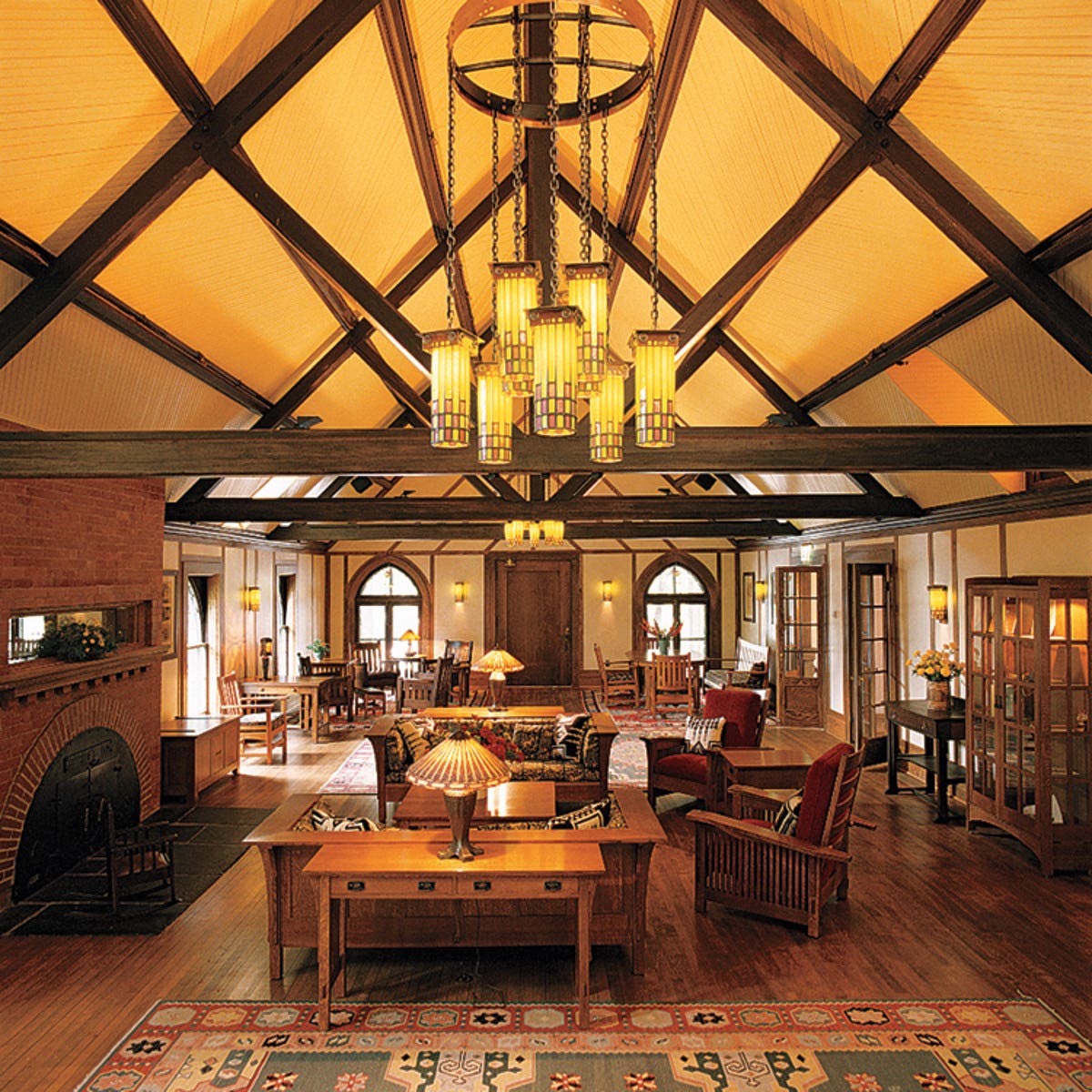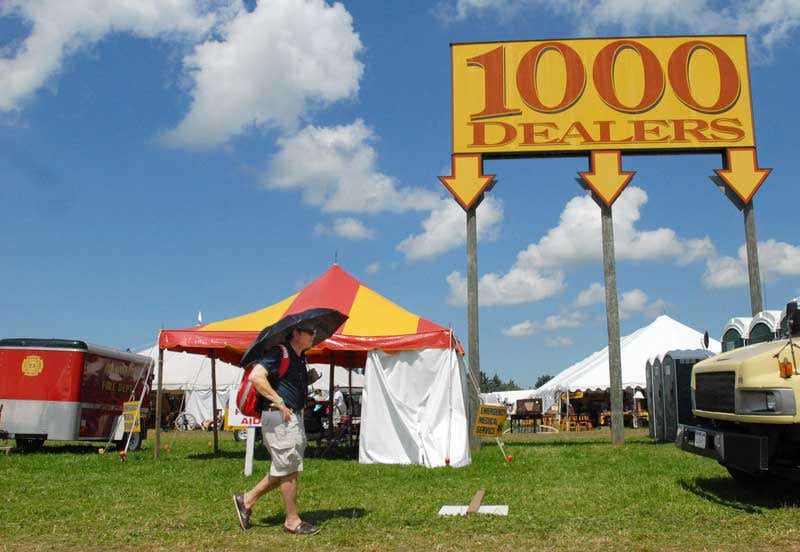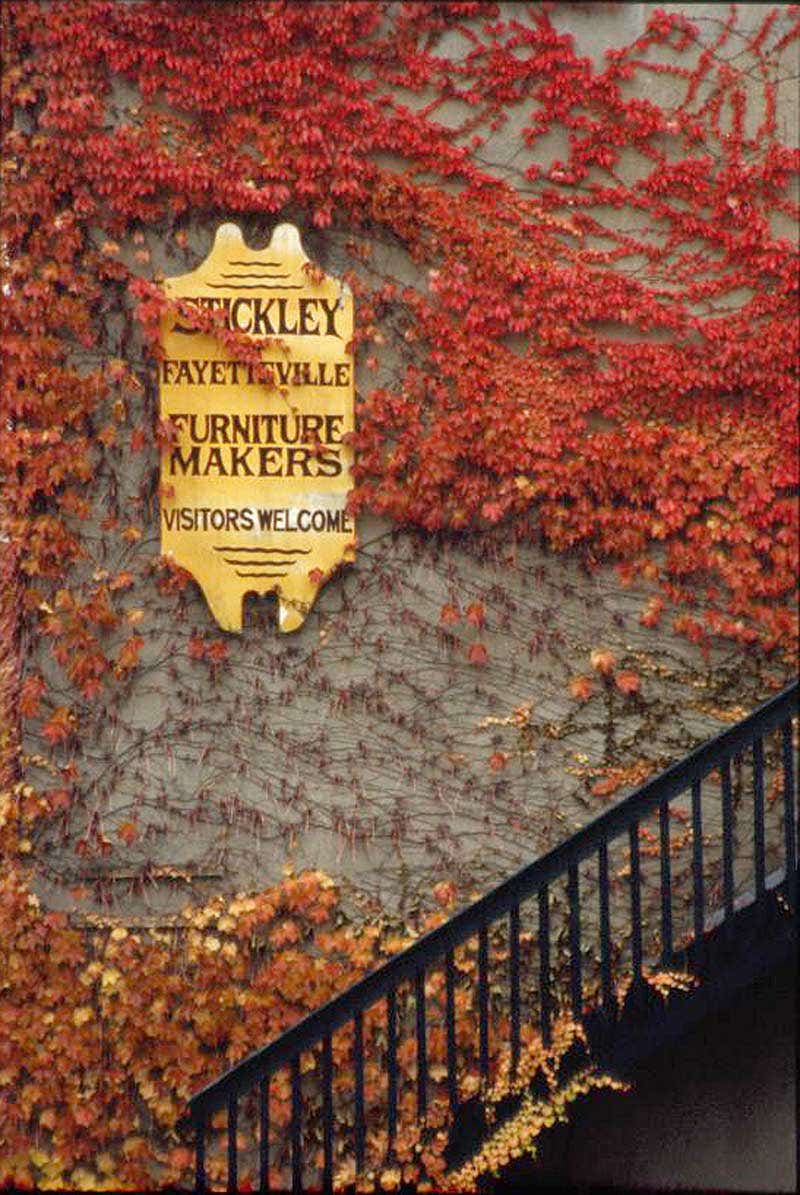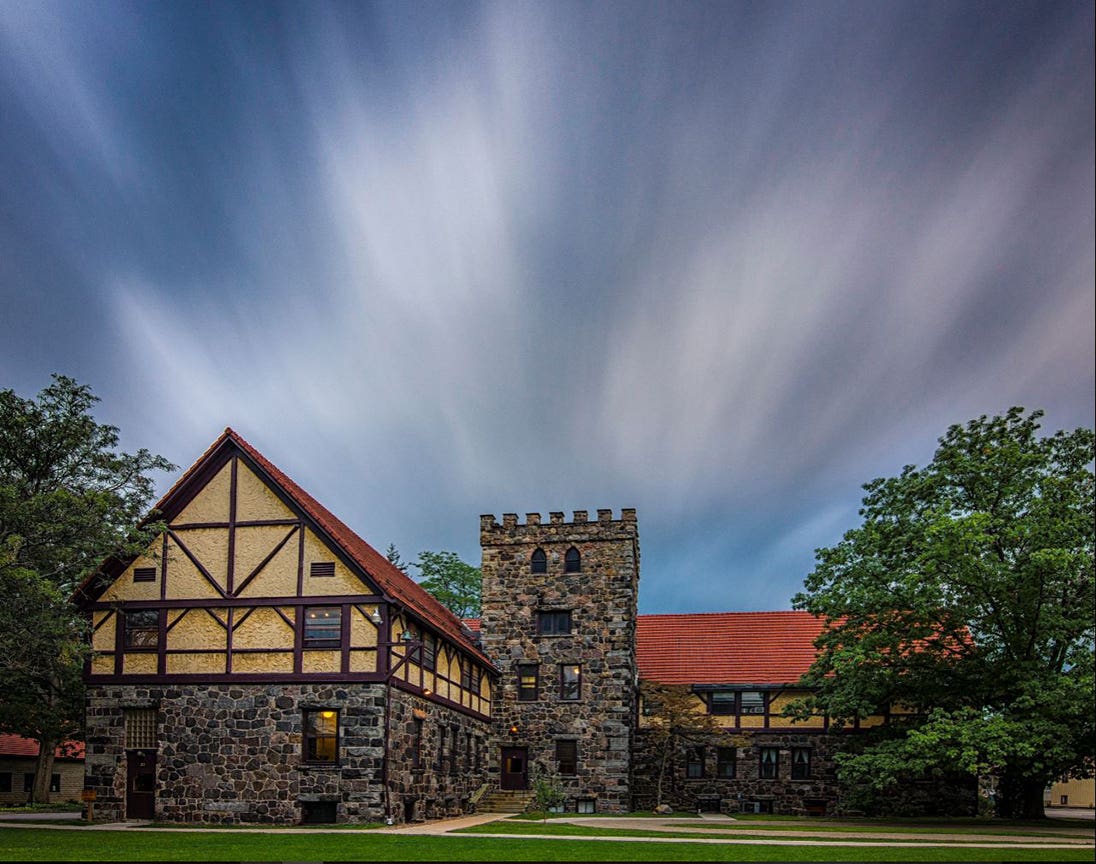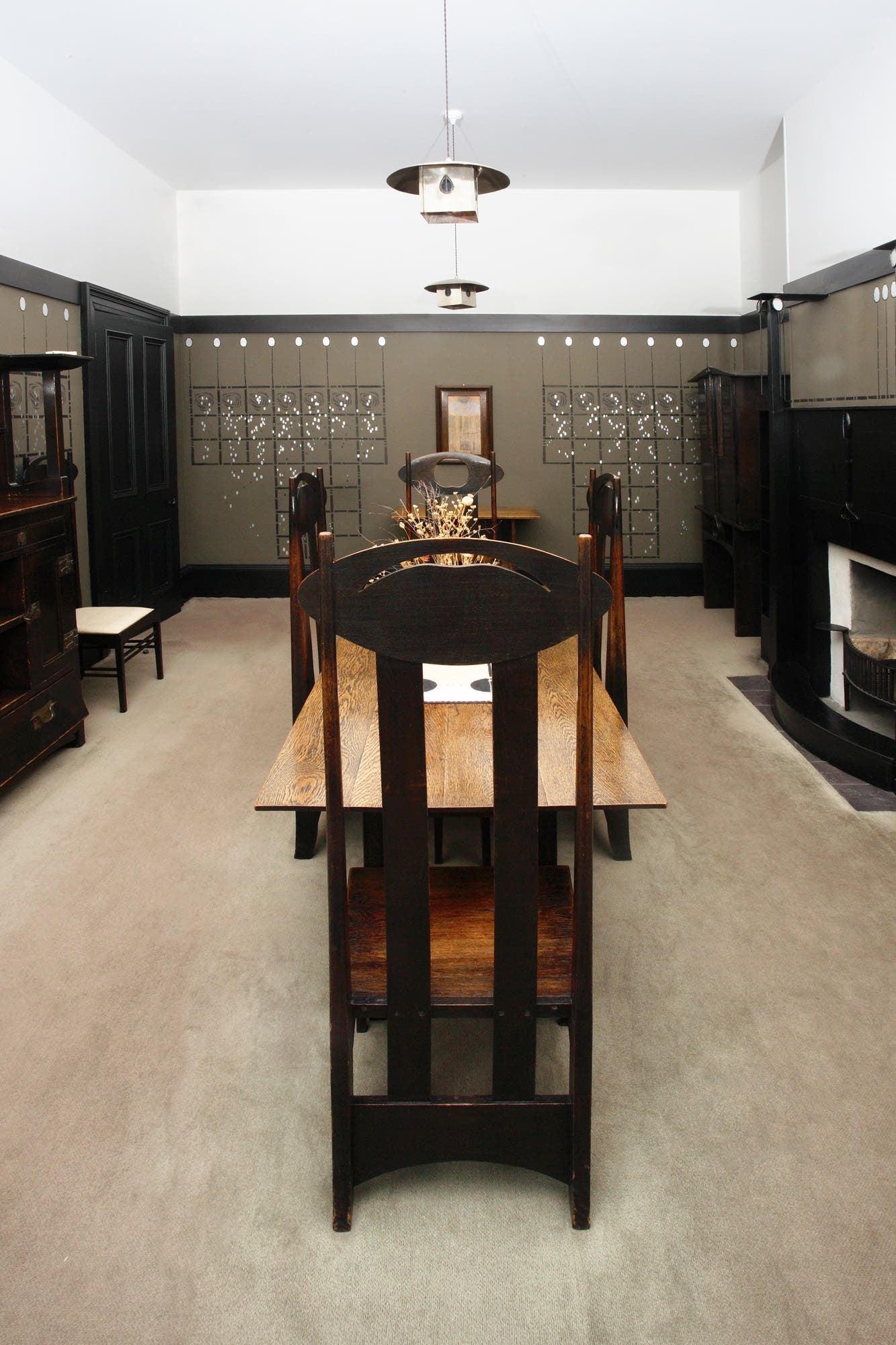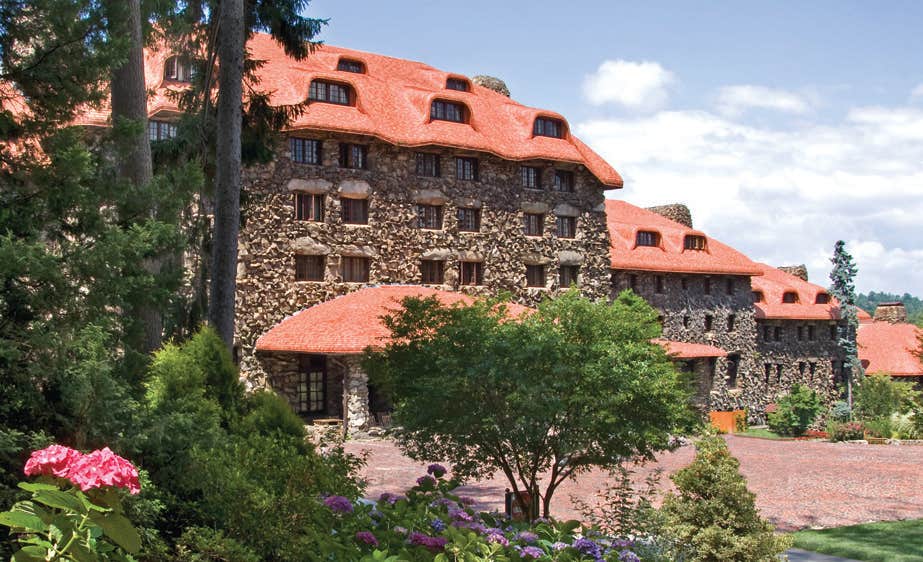Arts & Crafts Down Under
More exploration of the Arts & Crafts movement that made its way across the globe—including Australia.
Sydney, Australia, may be located on the other side of the world from the U.S., but it certainly wasn’t exempt from the broad influence of the Arts & Crafts movement. It left an indelible mark on Australian architecture and culture. Whether you take a stroll through some of Sydney’s harborside suburbs, or stop to admire the attention to detail visible in exquisitely designed jewelry and ceramics, you’re sure to catch glimpses of lasting imprints all across the city.
Numerous local architects garnered inspiration from the work of English designer William Morris, altering ideals to enhance the new suburbs popping up in Australian metropolises.
MOSMAN Start your journey with a scenic drive through Mosman, a neighborhood on the north end of Sydney, less than 20 minutes from the Central Business District (CBD). Once there, try Canrobert, Prince Albert, and David streets, where you’ll find a plethora of Federation Arts & Crafts homes with outdoor color palettes complementing Australian scenery in varieties of gold, cream, deep red, and gumleaf green.
On Ragland and Boyle streets, you’ll see plenty of California-style Bungalows, which first appeared in this area following a visit from Chicago architect Walter Burley Griffin. His stay renewed an interest in American home design, especially since Pasadena (Calif.) and Sydney share such similar climates.
NEUTRAL BAY, CREMORNE, KURRABA POINT Harborside areas close to Mosman, these three developed as “alternative society suburbs,” inhabited by Arts & Crafts-movement admirers attempting to get away from mass production and to give homes a more human touch. Most notable in this area is the Brent Knowle House at 31 Shellcove Road, designed by BJ Waterhouse, in 1914, who was heavily influenced by contemporary English Arts & Crafts architecture, the designs of C.F.A. Voysey in particular.
Admire the fine craftsmanship of past makers, displayed at various museums and galleries:
POWERHOUSE MUSEUM
Inside you’ll find Arts & Crafts collectibles on display through the museum’s Icons exhibit, where items have been specifically curated to make visitors question the notion of what truly makes something an icon.
Look for a hallmarked Liberty & Co. Ltd. Sterling-silver mantel clock with blue-green enamel dial, ca. 1902, featuring a Celtic knot design on its front two corners and a circular turquoise stone in the center of the base plate.
Also on display is a striking high-backed chair, designed by Scottish architect Charles Rennie Mackintosh for Catherine Cranston’s Argyle Street Tearooms in Glasgow around 1898–99. Mackintosh raised the height of his chairs in an effort to have the furniture create a dramatic statement within the room. This chair in particular is the first of his high-back chairs to feature the top rail as an emblematic or iconic symbol.
CRAFT NSW A 10-minute drive will land you in The Rocks, known as the birthplace of modern Sydney: a strip of land European settlers called home, dating back to 1788. What was previously a British colony of convicts, soldiers, and sailors is now a flourishing 21-century entertainment district.
Catch sights of the iconic Sydney Opera House and the Sydney Harbour Bridge along your way to the gallery of the Society of Arts and Crafts of New South Wales, situated in Sydney's historic Old Coroners Court.
The Society dates back to 1906, when Dorothy Wilson welcomed six craftworkers into her home to exchange ideas. The Society thrived and still remains one of the oldest creative groups in Australia. Its gallery is a smorgasbord of unique handmade gifts, collectibles, souvenirs, and wearable art. Tip: Visit on a weekend and wander through The Rocks, amidst convict-carved sandstone bursting with history. Weekend markets are a colorful collection of over 200 eclectic stalls featuring fashion and accessories, food, locally produced housewares, jewelry, photography, arts and crafts, and more.
Overnight at Simpsons Hotel
Erected in 1892, and only one mile from Sydney’s CBD in Potts Point, the Simpson’s Hotel is relevant to the English Arts & Crafts movement. Its distinct features include many nooks and crannies, and the use of red brick and carved timber. Tucked inside an Art Deco district, the hotel proudly states it combines “Arts & Crafts architectural heritage with a luxury experience.”
During the 1920s, the property was split up into six apartments, which unfortunately included unsympathetic additions. Present-day owners purchased the property in 1987 and the space underwent major renovations to right its mismatched wrongs. Stay in one of its 12 boutique hotel rooms to experience the charisma of a past era. Simpsons Hotel offers meals and overnight lodging.
More at visitnsw.com.
Emily O’Brien writes about old homes and buildings. She’s the digital editor for Old House Online and the managing editor for Traditional Building. Recent print and digital publications include New Old House, and North Shore Home.



